The first rizzuto also known as the “pre-rizzuto” is a well designed and built knife. Measuring 10.5 inches not including the bale, this was Japan’s entry into automatic knives. Lightweight and hard firing, the first rizzutos were unique and reflected Japanese innovation. The steel was hardened and the scale material was tough bakelite. The knives utilized a lock back or mid spine design. The blades were a swedge grind with a short throw safety after Italian makers of the time. Steel lined and d-stamped, the spring was formed stock and flattened at the tip so as to not sit above the liners. The bale was filagreed which became standard on rizzuto knives. These were made in both white and black. It is said the rizzutos were knock offs of Italian knives. There is also a school of thought which holds these first rizzutos were Italian made. I don’t go along with that and believe these knives are Japan’s entry into the world of automatic knives of the times. These were excellent knives by any measure. Besides, when did the Italian makers build a spine lock with batwing guards? Also pictured is a black scaled model with Japan stamped on the tang along with its original box, also marked Japan.
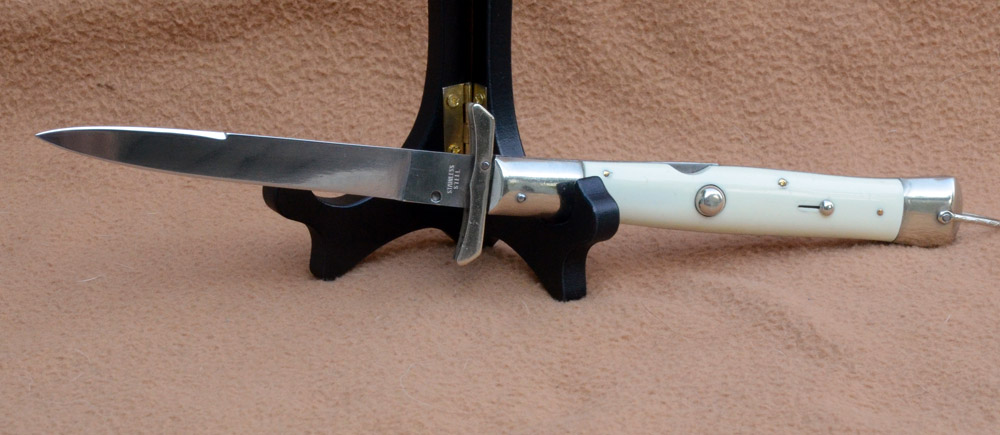
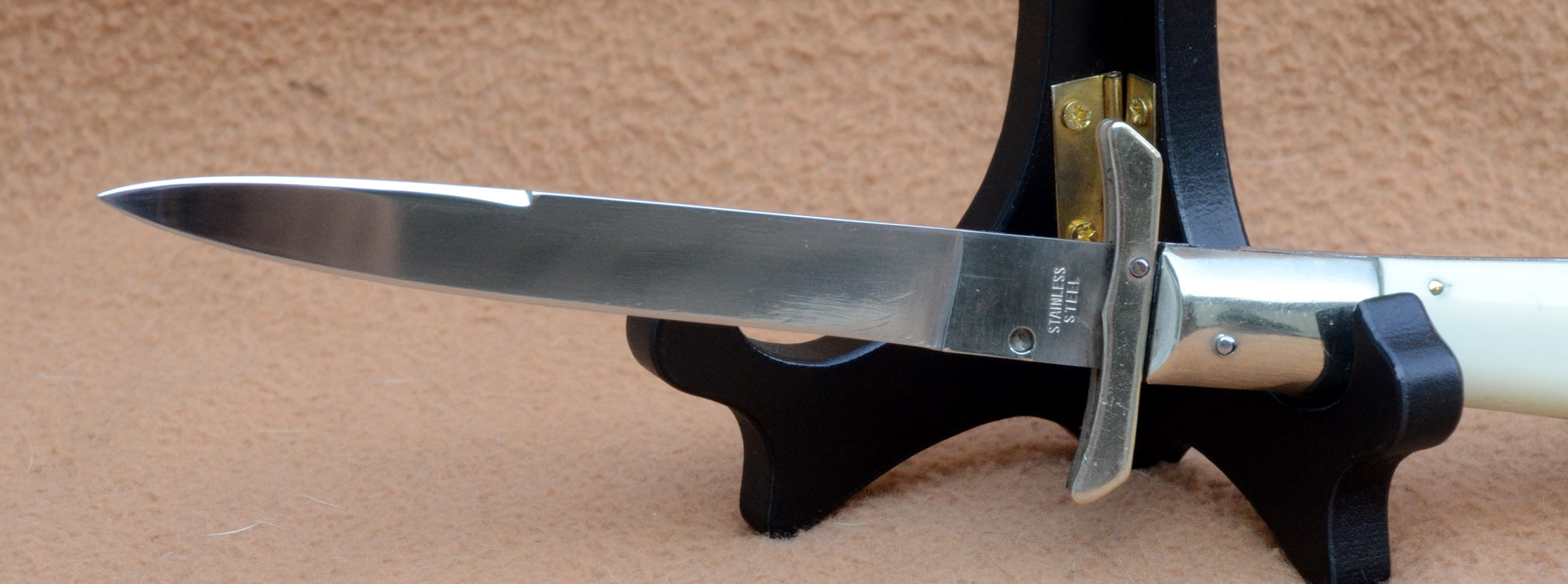
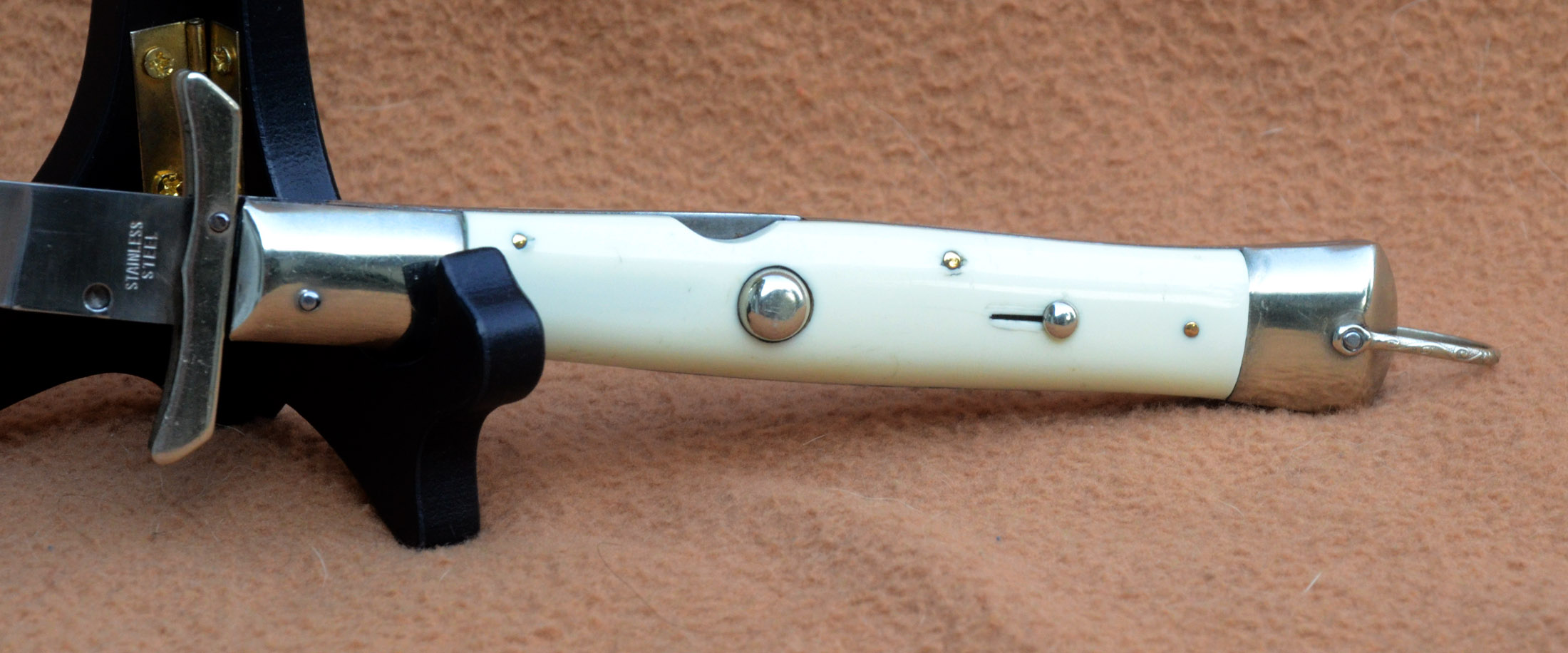
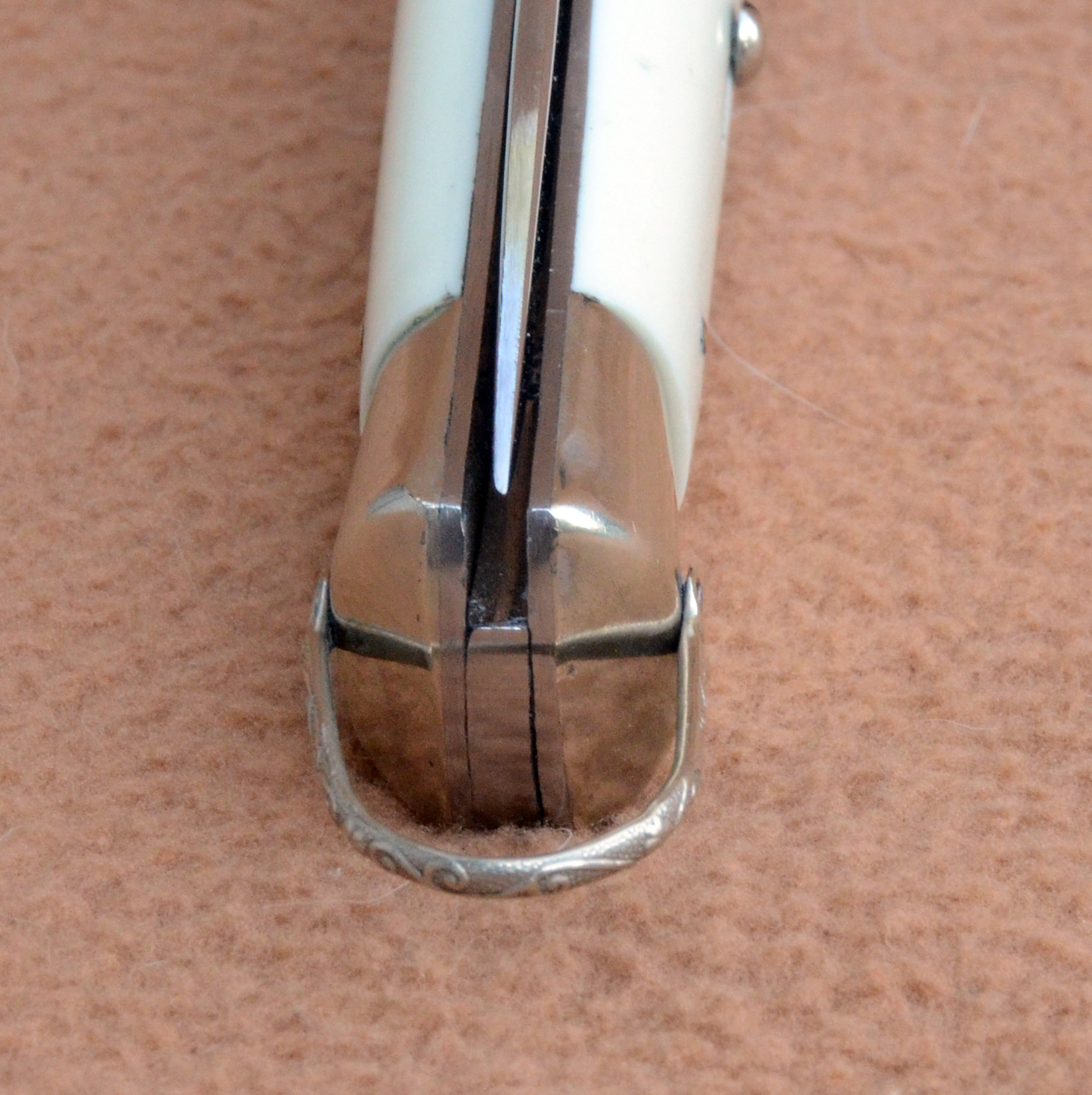

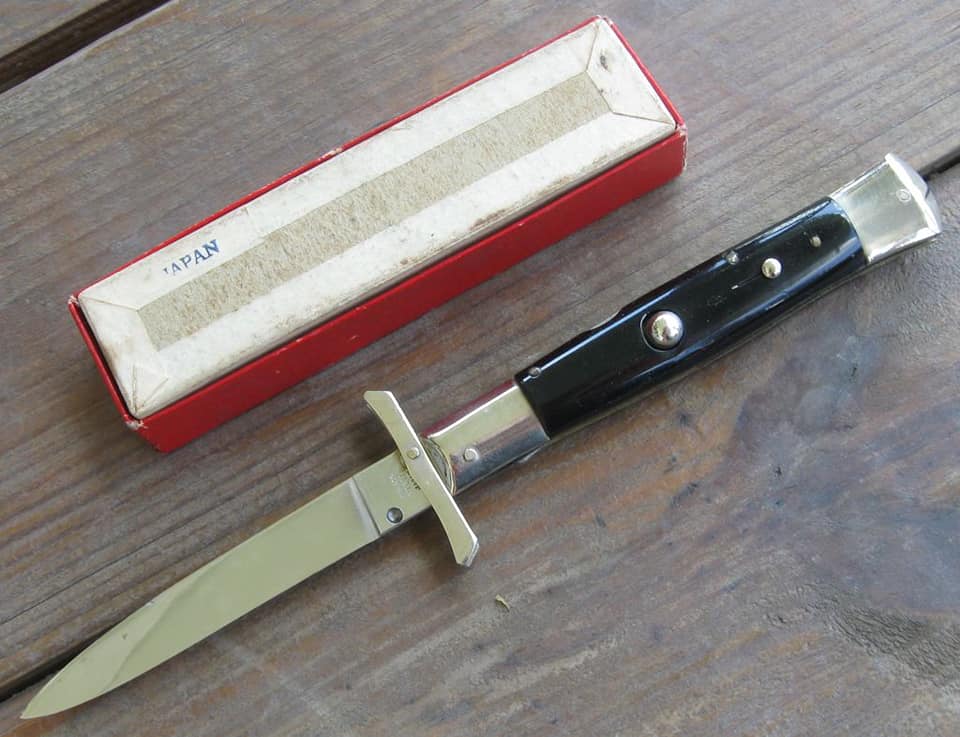
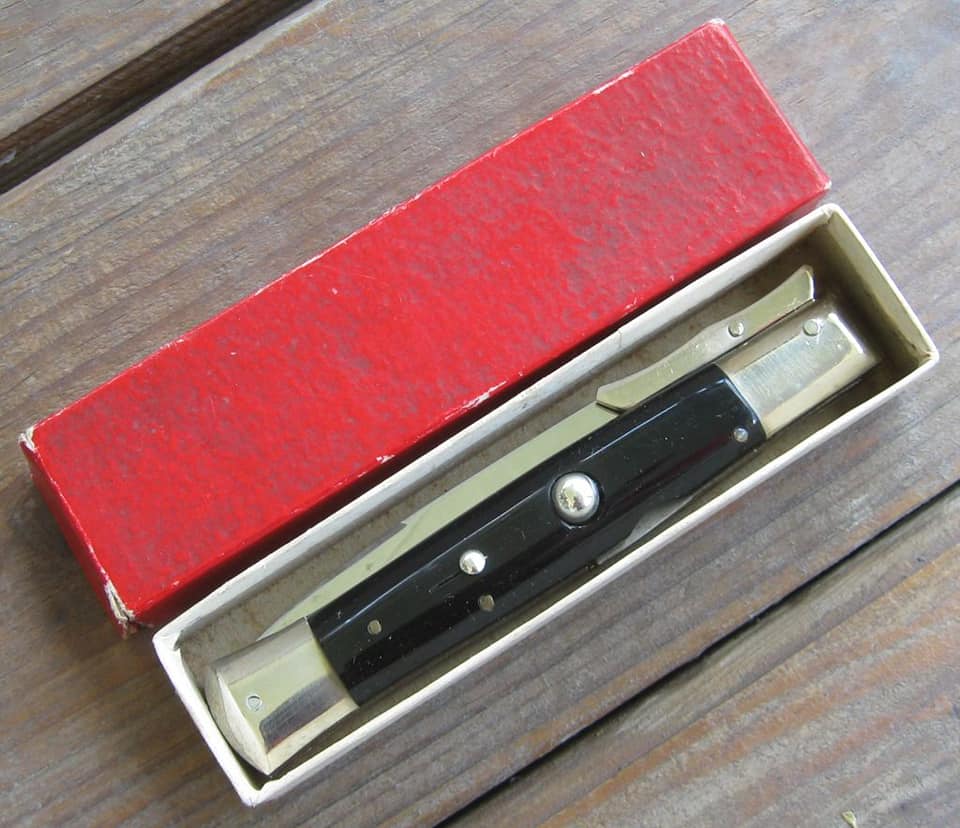
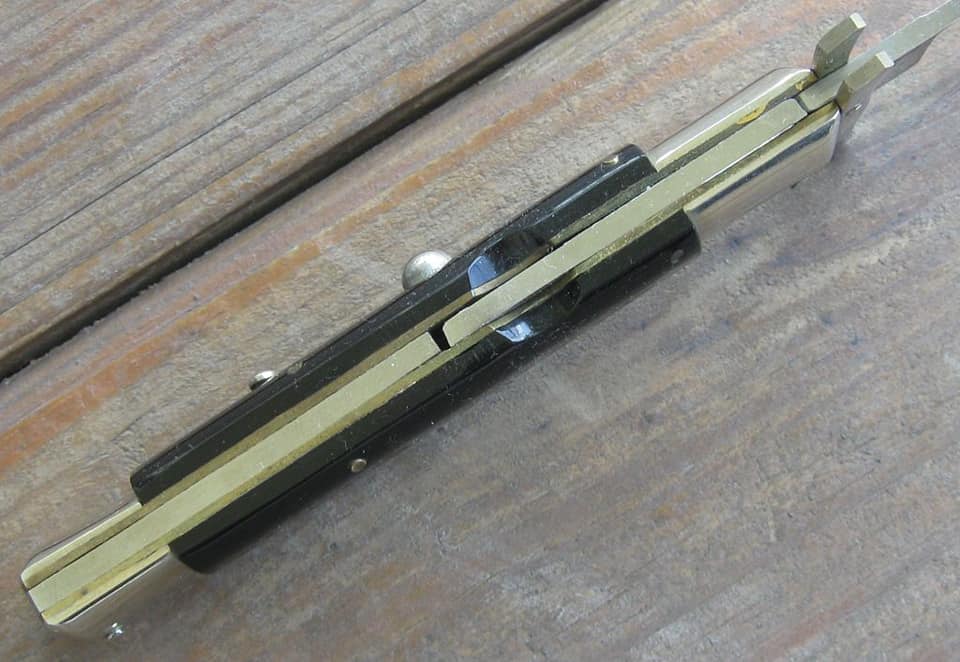
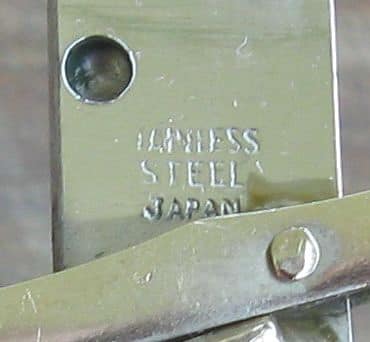
Black pre-rizzuto pictures courtesy of Ken Whitfield
